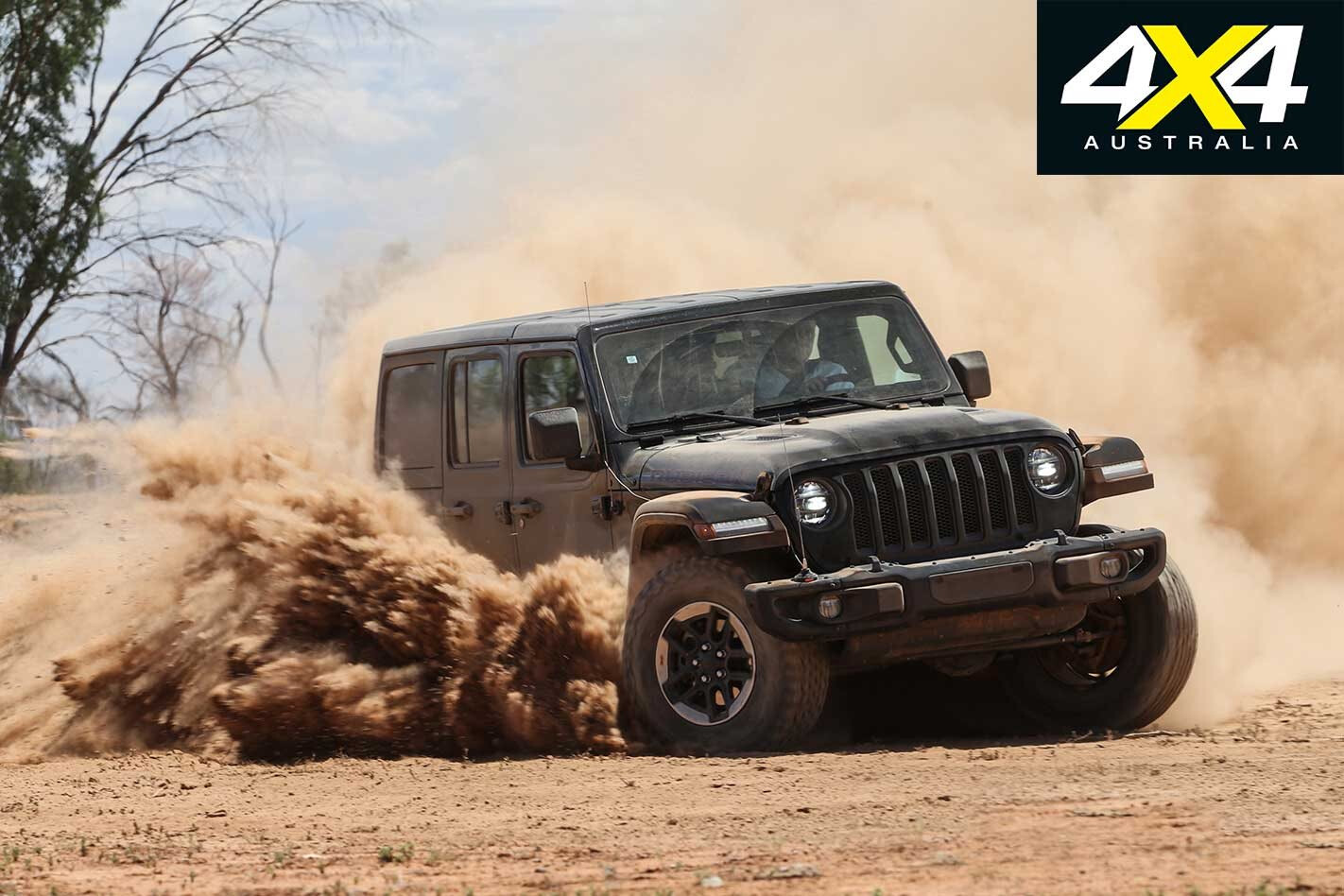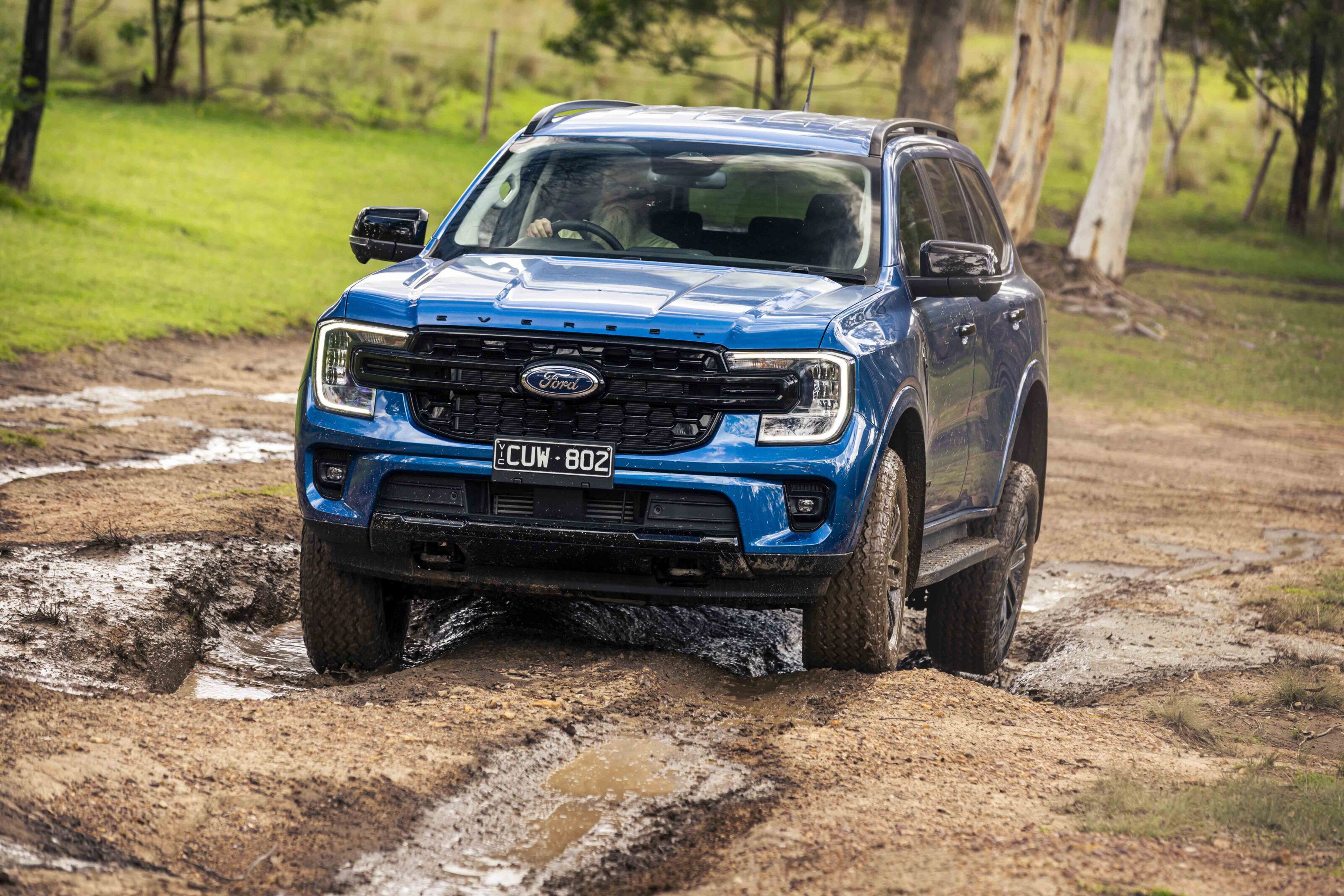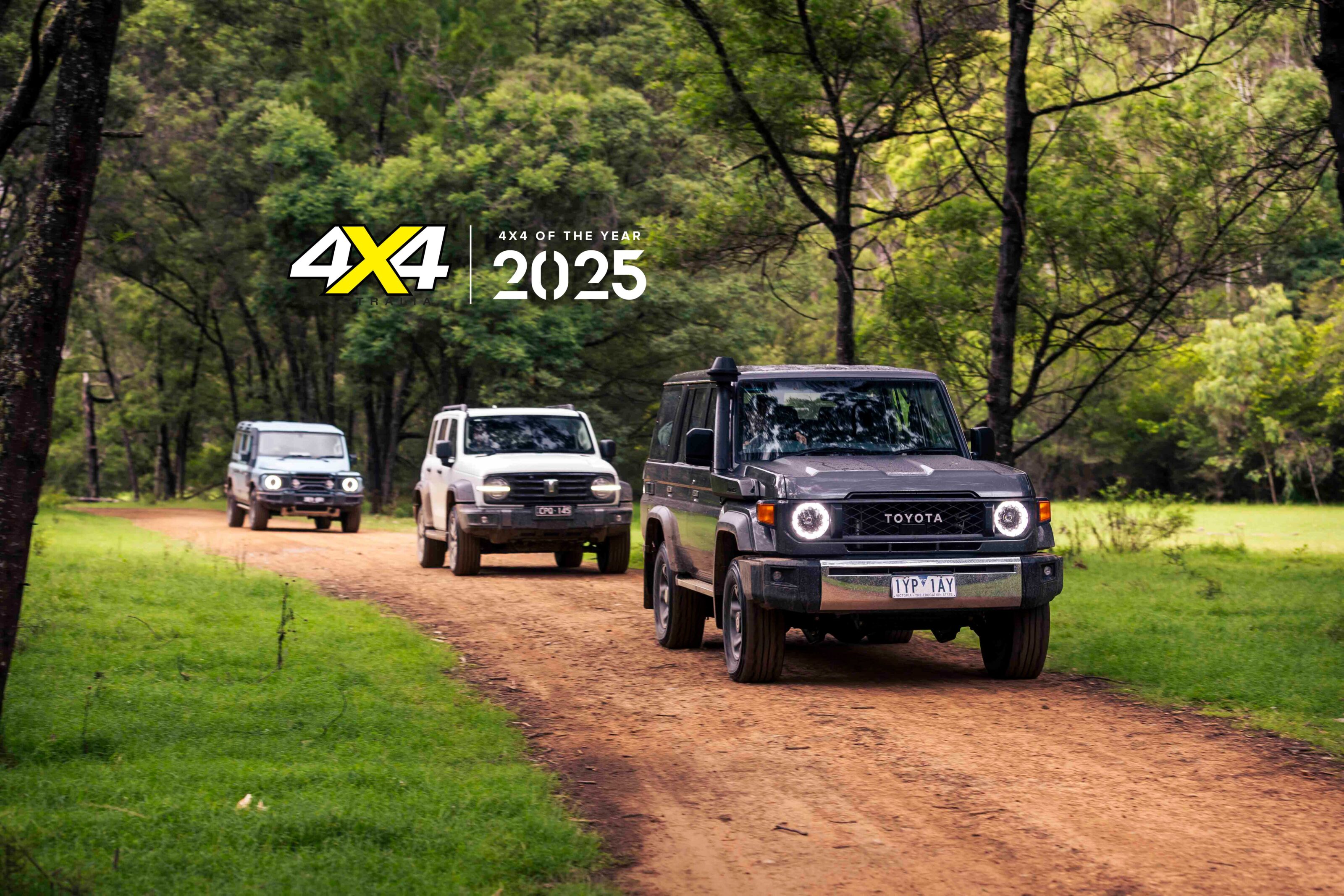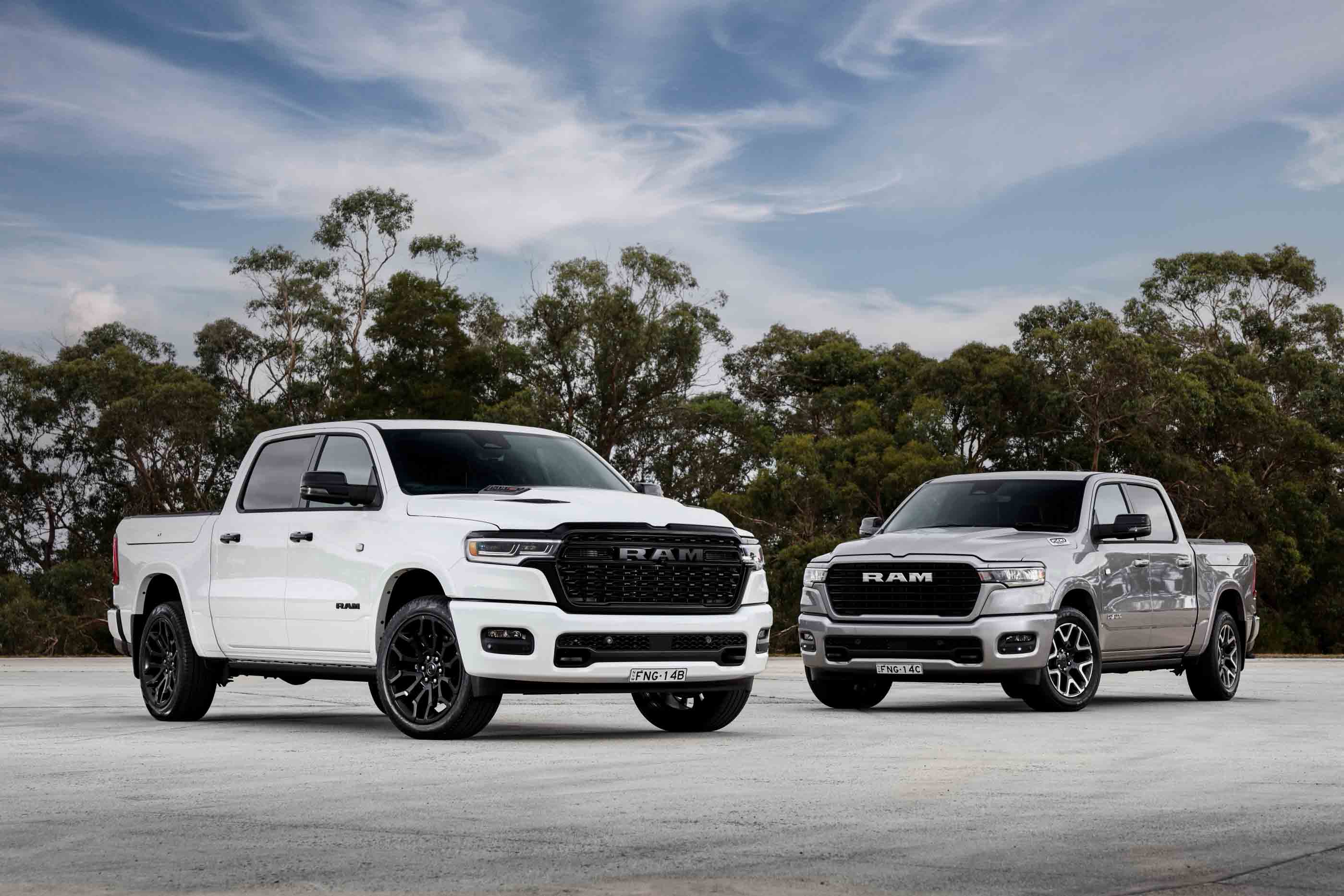The thermometer has just ticked over 44°C and the sun is penetrating even the most weathered, sun-ready head gear, adding to the dry heat with piercing effect.
But it’s the flies that have caught the eye – and ears, arms and legs – of Bernie Trautmann and John Adams, two US-based Jeep engineers in Australia for the first time.
Responsible for preparing the new JL Wrangler for duty, Trautmann and Adams have experienced their fair share of inhospitable terrain. That’s everything from the -40°C cold of Alaska to the 55-plus heat of disused mine tracks in Parker, Arizona – the latter one of the new favoured test areas the guys use to punish prototypes.
One of program manager Adams’ most memorable is a hot test where the soles of the boots of one of their travelling party stuck to a rock, separating completely from the rest of the shoe.
Yet it’s the ever-present Aussie blowfly – hundreds of them – that have the pair donning head nets and swatting furiously. I’m almost scared (or embarrassed) to tell them that our red dirt surrounds on the outskirts of Alice Springs doesn’t have what the average cocky would consider a lot of flies.
Anyone who’s ventured through remote areas knows the little buzzers seemingly have a sixth sense when it comes to locating humans in the middle of nowhere, sometimes in the sort of numbers that make you wonder what sort of insect oasis they’ve stumbled upon.
My immediate instinct is to get our visiting Americans thinking about an automated system of removing flies from cars that doesn’t involve racing the windows down and madly chasing them about the cabin only to realise some of their winged buddies have taken the open cavity as an invitation to annoy.
After all, these guys are engineers, they innovate and try to create solutions to problems – problems people sometimes don’t realise they have. Or, at least, problems they never thought there was a solution to. It’s now clear to them the fly (many of them) is a problem.
But Trautmann and Adams aren’t here for the local wildlife, although they do have their eyes peeled for kangaroos, most of which are taking respite from the central summer heat. They’re on a key engineering mission.
With newcomers such as the Compass and Wrangler, Jeep is thinking more globally, in turn adding more countries to its testing and development schedule. At the insistence of local Fiat Chrysler Automobiles chief Steve Zanlunghi, Jeep’s Detroit-based HQ has added Australia to that list.
Trautmann, a German-born, bow-and-arrow hunting Michigan local is the off-road development lead on the Wrangler. Clearly, it’s a big deal in Jeep land, because in many ways the Wrangler is Jeep.
It’s the car that defines the brand that was created in 1941 as a tough and capable military machine that evolved into a civilian 4×4. It’s a proper off-roader and one that gets used to tackle some ludicrously tough tracks and trails, and it’s the car the aftermarket revs its engines for because so many of the passionate owners love adding to the Wrangler capability.
All of which means more pressure for Trautmann, something he describes as “at times insurmountable”. But it’s also something that drives him.
“Typically when we launch a vehicle … everyone [within the company] kind of watches. Wrangler’s different in that it’s kind of like the whole world is watching us. That’s what fuels me; that’s my passion,” he says.
“We’re not going to stuff it up! The expectation throughout the world and the aftermarket world … the Jeep Wrangler has so many sweet spots we have to hit, there’s a lot of pressure.”
Key to that focus is how it performs in challenging terrain – and not just any challenging terrain, but the sort of stuff that would leave your average fourby beached, snagged, bogged or failing to proceed.
“The vehicle always has to increase in capability,” Trautmann says, pointing to the tighter turning circle, better approach and departure angles and crawl ratio that’s dropped from 59:1 for the auto JK to 77:1 for the JL. “We’ll never give up capability, for us that’s the forefront of everything we do.”
Key Wrangler attributes remain. There are next-gen Dana live axles at either end and a second stubby gear lever for selecting low range, now available with a full-time transfer case for 4H on road.
The car we’re in is a Rubicon – the off-road hero – so also has a disconnecting front stabiliser bar and locking differentials. Carving up a steep, rocky pinch demonstrates its immense capability on rocks. This car is also sporting scars from previous expeditions, the left-hand rail looking worse for wear after a brush with nature.
The interior has been poked and prodded and there’s no glovebox; it’s been removed to allow easy access to the wiring loom for connecting a computer.
The black four-door is one of the early prototypes, originally wrapped in camouflage but now roaming naked given the car is on sale in America. With the steering wheel on the left it is one of the early development vehicles that has been across a fair chunk of America and as far south as New Zealand.
There was also a white two-door Rubicon; although, it failed to proceed early in our adventure courtesy of a fault with the kill switch. The fate of each is grim: once their life as a development vehicle ends they’ll be crushed in line with regulations.
The Wrangler is tested extensively over immensely challenging rocks, soft sand and through deep, oozy, sticky mud. It’s also thrashed over flowing trails and tracks, occasionally with patches of corrugations.
But it’s the extended corrugations and the relatively high speeds – 60km/h-plus – that Australia has plenty of and that Trautmann is keen to learn more about.
We’re discussing the vastness of the terrain – “I see this expansive land that just seems to go on forever” – when he’s suddenly hard on the brakes as a washout appears ahead. It’s one of those short but punishing cuts through an otherwise respectable road that can extend springs to their limit and generally do their best to rip bits off bumpers and bash plates. We thunder into it, the car coping admirably – unscathed.
It’s a timely hit that gives Trautmann an appreciation of what a car in the Australian outback has to deal with, surprises and all.
“We’ve been on quite a few different road surfaces, some like back home and some quite a bit different,” he says. “The corrugated roads, we get into some of the washed-out roads back home, but not for that longevity. “It’s a different kind of drive cycle, so that’s of interest to us.”
The steady stream of 4x4s loaded to the roof – and beyond – also gives him an appreciation of how Australians use their 4x4s and how much they carry. The prospect of heading into the scrub for a week or more is largely foreign to these Jeep experts, who are rarely more than few hours from a shower or service station in their homeland.
For this test we’re not swapping shocks or recalibrating electronics; it’s data the guys are chasing. Sensors and computers are constantly collecting information on the movement of the suspension, temperature and speed. That data will be taken back to Michigan and fed into a simulator that shakes the vehicle violently, taking the worst of the Aussie roads and condensing them into a test cycle to simulate a worst-case scenario.
One thing they’ll be monitoring is the heat dissipation of the dampers and whether they’re up to the repeated punishment of vast stretches of corrugations.
“We’ll take that data back home, scrub it then look at it with our extended team,” says Trautmann. “Is there something there that takes further work? Maybe there’s a phase two where we come out and continue that kind of data acquisition. Hard for me to answer. I’m a data-driven person, so the data will tell us if anything needs to be tweaked.”
In other words, this mission may simply be about validating the existing suspension tune, or it could result in new springs and dampers unique to Australia to better cope with outback roads. Not that you need large data files – or to be behind the wheel – to realise the improvements from JK to JL.
Compared with the outgoing Wrangler we’ve also got in our convoy the JL settles quickly, the newfound body control a massive improvement. There’s much less of the bronco bucking that a few decent lumps could inflict on the rear of a JK. That newfound maturity not only helps on these tough surfaces, but also promises to make the Wrangler a nicer thing on the bitumen.
“We’ve honoured the heritage of the car … but it’s so much more fun on-road,” says Trautmann. “It’s important for us also to deliver for the on-road customer.”
And, it seems, deliver a better Jeep for the Australian off-roader.
TRAUTMANN TRAIL
Proving grounds are an important part of vehicle development, but real-world testing will always be important to makers of serious off-roaders such as the Jeep Wrangler.
“If we’re successful in our backyard, hopefully we’ll be successful in the real world,” says Trautmann. “It’s the final exam, it’s like study, study … a validation.”
A plastic inner wheel arch hanging from its clips is testament to the value of getting out and testing. Adams explains it’s an issue that has already been corrected on the production line in Ohio. But Jeep is also working to better prepare its proving grounds for much of the grunt work.
In recent years Bernie Trautmann was heavily involved in carefully crafting a section of the proving ground designed to test the most capable vehicles Jeep builds. Boulders and twists and turns are all included and there are sections with varying levels of capability. As well as the Wrangler Sport and Rubicon, there are sections only Mopar-modified Wranglers will be able to traverse.
And the name of the new test track? Trautmann Trail.
TRAIL TESTED
Despite its traditional look and traditional mechanical layout, the JL Wrangler introduces new thinking and employs technology where appropriate. Parts of the body, including the doors, are aluminium, for example, indicative of the efforts designers have gone to, to reduce weight.
“Weight begets weight,” says Adams. “You put weight in somewhere else and you’ve got to put bigger brakes on … it’s like a waterfall effect. Everything you can reduce is a multiplier and a benefit down the road.”
But it’s the traction-control system Trautmann is most proud of with the JL. “The brake lock differential is such a cool story of how we made it,” he says. “It was such a difficult process; it took me almost two years.”
Trautmann explains it was a challenge to calibrate it for rock hopping. “It should be instantaneous and seamless that you’re transferring all that torque. Certain thing like driving in snow and ice are quite different to rock hopping.”
In the end, he’s stoked with the result, one that in many instances can effectively replace locking diffs, something only fitted to the Rubicon.
For the Rubicon Trail development drive – part of receiving the “Trail Rated” badge of any new Jeep – the Wrangler relied heavily on electronics.
“We ran the entire Rubicon without using lockers,” he says. “We ran it front and rear open differentials; shows our controllability and tractive effort.”





